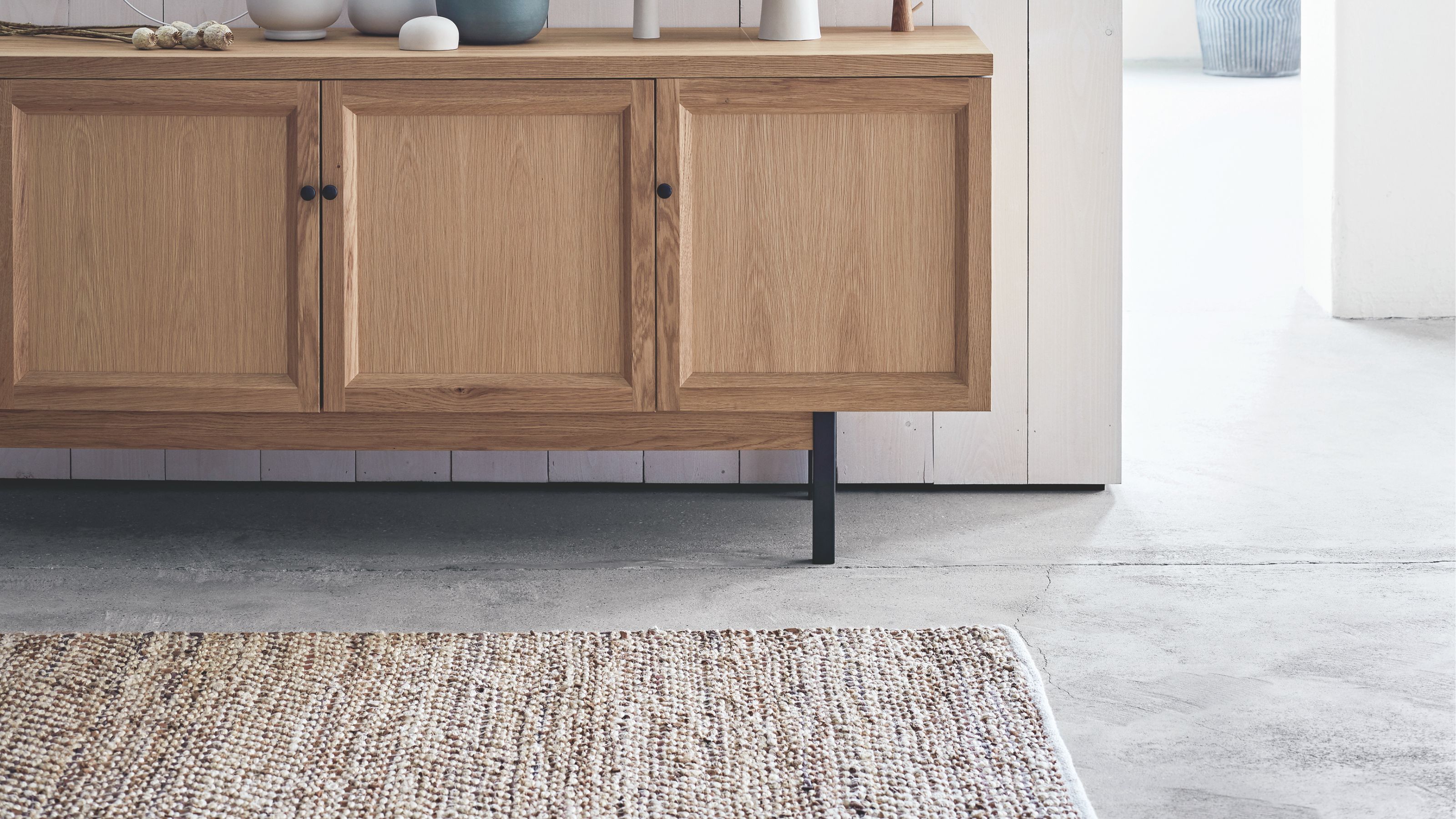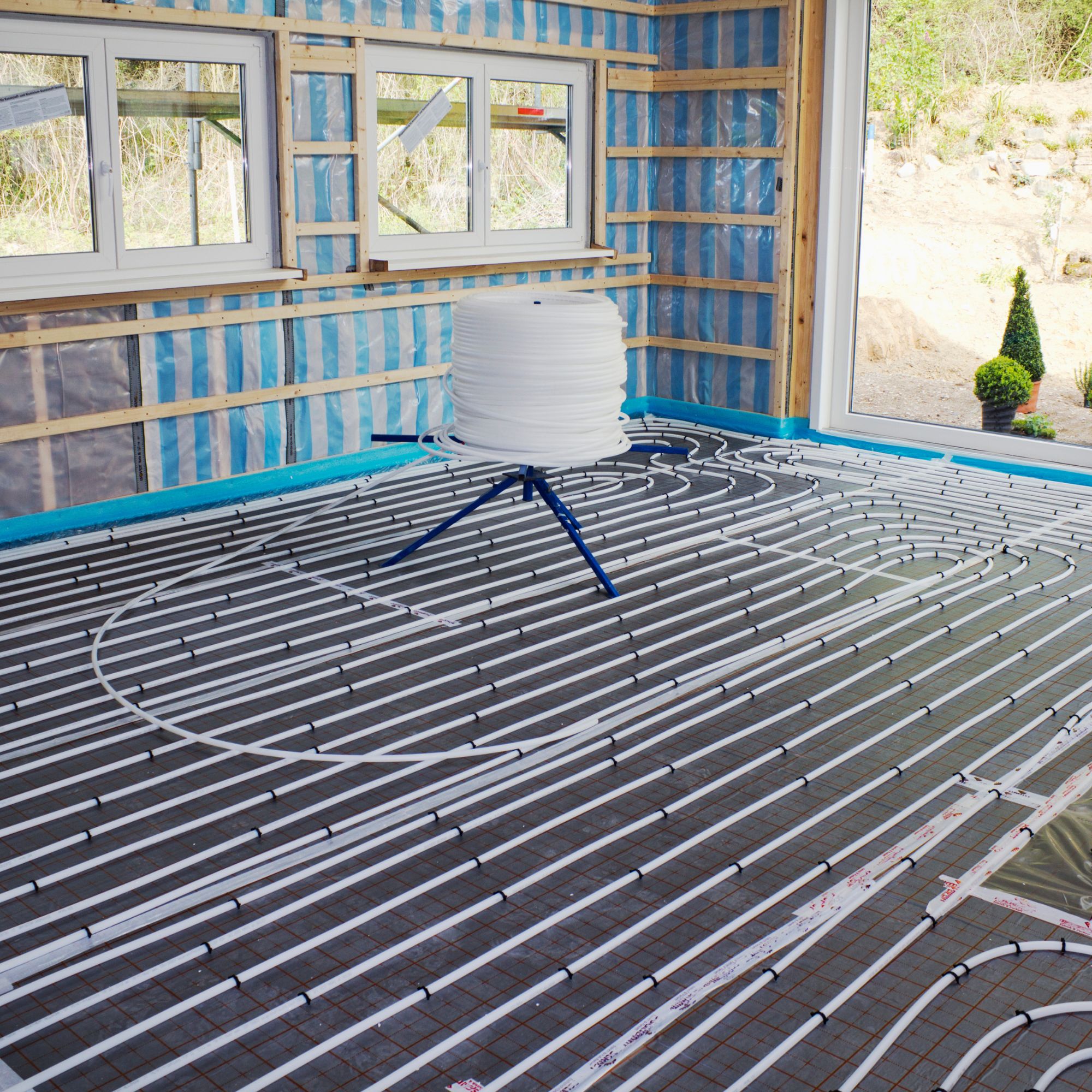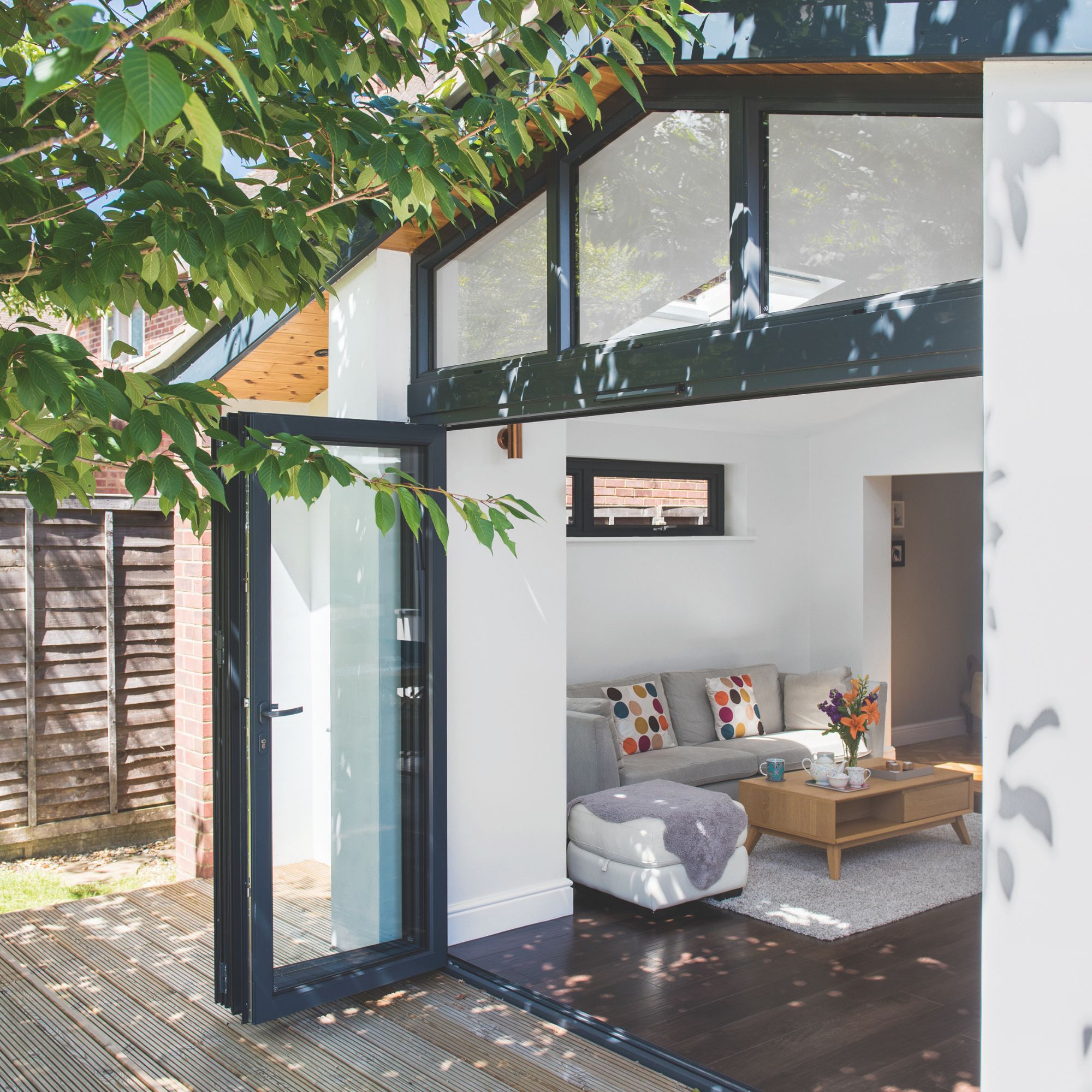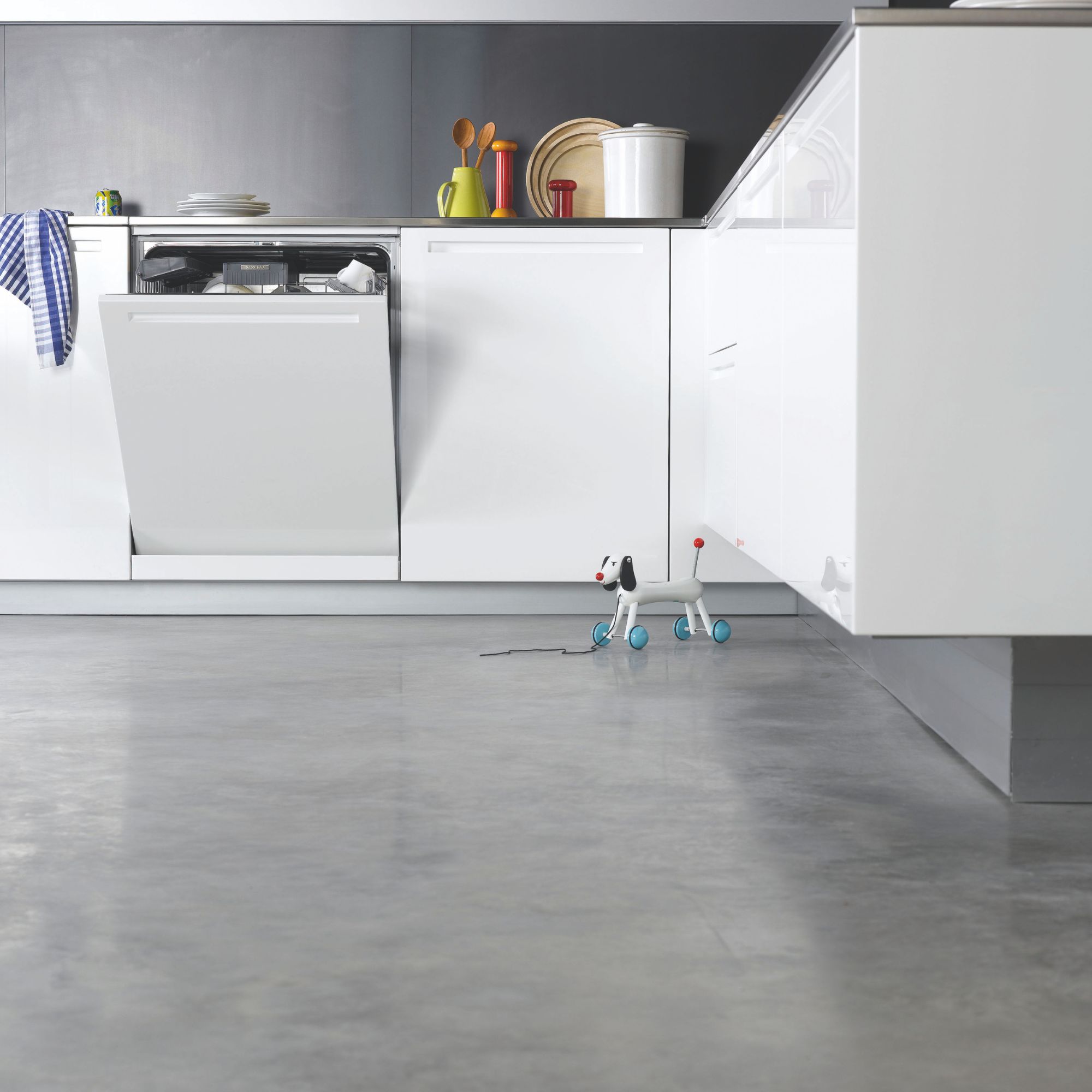These 5 underfloor heating mistakes will make your system cost more to run and less efficient — no wonder experts say they should be avoided
Get the most out of your underfloor heating by side-stepping these common errors


There are plenty of reasons a homeowner would choose underfloor heating. Not only does it mean no radiators, but it also offers a really comfortable way to heat your home.
But while there is plenty that experts wish homeowners knew before installing underfloor heating, it's also important to know the mistakes to avoid that could lead to an ineffective system and sky-high energy bills.
To help you dodge these missteps, I've asked the experts for their tips on the most common underfloor heating errors they see, and what can be done to give them a wide berth.
1. Choosing the wrong type of underfloor heating system

Laying underfloor heating pipework can be complex, and it's easier when you are building from scratch, such as an extension. But it is possible to retrofit in an existing home.
Before you think about installing underfloor heating, it's crucial you choose the right type of underfloor heating. Get it wrong, and you could face much higher installation costs (and disruption) than planned, as well as needlessly high running costs.
Electric underfloor heating systems are best suited to installation in a single room, especially a bathroom, as it offers fast heat up times and quick and easy installation. But if you try and install electric underfloor heating in larger spaces, the cost to run will be significant.
On the other hand, wet underfloor heating systems are more complex to install, which can mean higher upfront costs. However, the running costs will be much lower, especially when installed in the busiest areas of the home, like the kitchen.
You also need to choose right system for the type of installation — whether it's in a space you are building from scratch, or retrofitted as part of a renovation project. ‘Underfloor heating really shines in new builds because it can be built straight into the floor structure, which makes it much more efficient,' says Eric Hargreaves from Your Choice Builders. 'When it’s designed properly, you get lower energy bills, no cold spots, and a much more even heat than traditional radiators.
Sign up to our newsletter for style inspiration, real homes, project and garden advice and shopping know-how
‘One mistake people often make is underestimating how much floor depth is needed. If the build-up isn’t right, you don’t get the heat transfer you’re expecting, and the system struggles.'
2. Not considering your home's overall efficiency

Whether you are adding more space or renovating your existing home, it's important you check the insulation is up to scratch before installing underfloor heating
No one wants to pay for heating that's literally just escaping outside, and so it's important that you address any poor insulation or draughty windows and doors before you install underfloor heating.
Failing to do so will not only mean your not reaping all the rewards an underfloor heating system can offer, but it will also means you'll be using way more energy than you need to (with higher energy bills to boot) in order to keep your home a comfortable temperature.
3. Sub-standard installation

Correct installation of underfloor heating is essential if you want to ensure there are no cold spots, especially in an open-plan space
In the case of wet underfloor heating especially, proper installation is vital. Without it, you risk cold spots, inefficiency and failing parts, which could be very difficult and disruptive to resolve. Unless you are experienced in fitting underfloor heating yourself, it's best to leave the installation of a wet system to a professional to ensure it's done properly and to avoid voiding any warranty. Electric underfloor heating kits mean you may be able to install this type of system yourself, but you will need a qualified electric to connect it to your home's electrical system.
It's also crucial that you have the right controls too, to ensure you have a comfortable environment at all times and use the system most cost-effectively. 'Modern UFH provides homeowners with far more control over their comfort and energy use, explains Ben Perris, Head of Sales for Indoor Climate Solutions at Wavin. 'Unlike traditional radiators, which heat a single area, UFH can be split into zones, allowing each room or area to maintain its own temperature.
'One of the biggest pitfalls homeowners make with underfloor heating is underestimating the importance of controls. Without an easy-to-use, well-planned control system, even the most efficient UFH setup can fall short.
'The key is choosing a system that makes managing your heating straightforward. Modern solutions simplify this process for both installers and homeowners. Intuitive app controls and clear zoning options allow homeowners to adjust temperatures room by room, schedule heating times, and even control the system remotely – making it easy to enjoy all the benefits of underfloor heating without the complexity.'
4. Pairing it with the wrong flooring

There are plenty of floorcoverings that work well with underfloor heating, including polished concrete. However, high-tog carpets and solid hardwood should be avoided
If you want to make sure your underfloor heating works most efficiently, then you need to make sure it's paired with the right type of flooring. Fortunately when it comes to floorcoverings for underfloor heating, there are plenty of options to choose from as well as some that should definitely be avoided.
'The key is to choose materials that conduct heat effectively and remain stable as temperatures change,' says Adam Robertson, Managing Director at Urbane Living. 'Thick carpets and heavy underlays are the least effective. They act as insulators, which means the heat struggles to pass through, reducing the efficiency of the system. If you do want carpet, look for low-tog options and keep the pile height to a minimum.'
5. Thinking it's maintenance free
While a correctly-installed underfloor heating system can be low maintenance, it's not zero maintenance.
Choosing a system from a reputable supplier with quality parts is a good start, but it's also important to keep on top of annual servicing to ensure your system runs smoothly for as long as possible. This is also a way to deal with any issues quickly before they turn into something worse, that may involve a lot of upheaval to fix.
You should also make sure you carefully read the manufacturer's instructions on how to use your underfloor heating so you can avoid any issues caused by human error.
Use our guide if you are still weighing up your options in the underfloor heating vs radiators debate to ensure you choose the right emitter for your home.

Sarah Handley is Ideal Home’s Renovation Editor. She joined the team full time in September 2024, following three years of looking after the site's home finance content. As well as all things renovation, Sarah also looks after our Home Energy content, which covers all aspects of heating and insulation as well as tips on how homeowners can reduce their energy usage. She has been a journalist since 2007 and has worked for a range of titles including Homebuilding & Renovating, Real Homes, GoodtoKnow, The Money Edit and more.
You must confirm your public display name before commenting
Please logout and then login again, you will then be prompted to enter your display name.